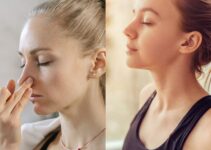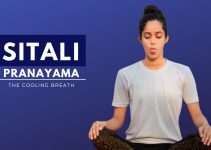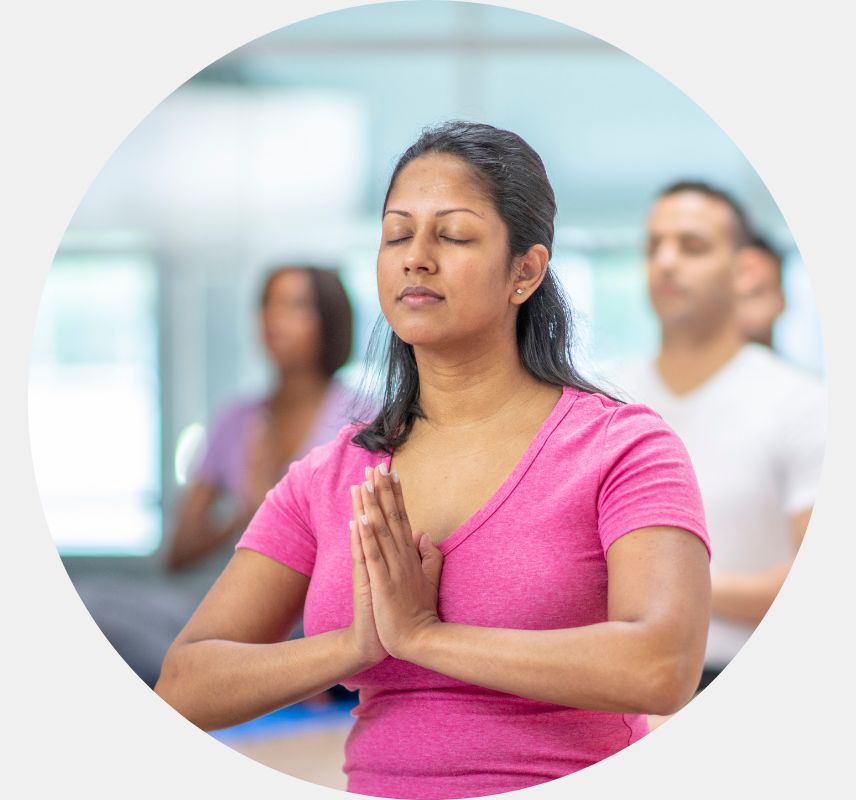
In ancient times, yogis discovered that the rhythm and depth of our breath can have deeply effect on our state of mind and health. Thus was born Pranayama, a cornerstone of yoga that is thousands of years old.
Historically, Pranayama has been more than just a breathing exercise. It was and is an essential practice to connect the physical body with the mind and spirit. Yogis believed that by mastering Pranayama, they could harness the life energy within, leading to greater concentration, health and inner peace.
While yoga Poses or ‘asanas’ loosen up the body, Pranayama conditions the mind. It serves as a bridge between the outer, active practices of yoga and the inner, passive meditation. In the hectic chaos of modern life, the serene power of pranayama provides a breathing space and an anchor that brings us back to ourselves.
Pranayama as the Fundamental Instrument of Mindful Breathing in Yoga
To someone new to yoga, ‘Pranayama’ might sound mystical, but its essence is simple when you break it down. The term ‘Pranayama’ is derived from two Sanskrit words:
- Prana: This translates to ‘life force’ or ‘vital energy’. It’s the unseen force that animates our bodies, ensuring our heart beats, our lungs breathe, and our mind thinks. Think of Prana as the electricity that powers the machinery of our bodies.
- Yama: Meaning ‘control’, this signifies the act of mastery or regulation. It isn’t about suppression but about finding a harmonious rhythm.
So, when combined, ‘Pranayama’ essentially refers to the control or mastery of this life force through our breath. It’s like fine-tuning a musical instrument, ensuring it plays in harmony with life. By practicing Pranayama, one aims to channel, balance, and enhance the flow of Prana in the body, using breath as a vehicle.
Read our more detailed and specific articles on Pranayama.
Importance of Mindful Breathing in Yoga
Breathing is something we do every moment, often without giving it much thought. However, in the realm of yoga, breath isn’t just a passive act; it’s the very essence that connects our mind and body. When you breathe consciously, you’re essentially sending signals to your brain, influencing your emotions and thoughts.
Think of it like a triangle, where each side supports the other. The mind, with its thoughts and emotions, influences our breathing patterns. In return, our breathing patterns can calm or agitate the mind. And then there’s the body, which responds to both the mind and breath. For instance, when anxious (a state of mind), our breathing becomes rapid, and our muscles tense up (bodily reaction). On slowing and deepening our breath, the mind finds calmness, and the body relaxes.
In yoga, by paying close attention to our breath, we aim to bring harmony to this triangle of mind, body, and breath.
Benefits of Proper and Mindful Breathing
Incorporating mindful breathing in yoga isn’t just a ritual. It offers tangible benefits that you can experience in your daily life.
- Improved Concentration: When you focus on your breath, you’re training your mind to stay on a single task. Over time, this focus spills over into other areas of life, making it easier to concentrate on tasks and reduce distractions.
- Stress Relief: Slow and deep breaths activate the body’s relaxation response. This counters the stress hormone, bringing about a feeling of calm. When you’re overwhelmed, just a few moments of mindful breathing can reset your mood.
- Deeper Meditation: Breath is an anchor in meditation. By observing and controlling it, one can dive deeper into a meditative state, and fin a space of stillness and clarity.
- Enhanced Physical Postures: Proper breathing provides the necessary oxygen to muscles, making them more flexible and efficient. In yoga, syncing breath with movement ensures that postures are held correctly, reducing the risk of injury and making the practice more effective.
Basic Breathing Techniques in Yoga
Breathing is an essential aspect of life, but not all breathing is the same. In yoga, we approach it with intention and precision. Here are three foundational breathing techniques that, once understood and practiced, can elevate your yoga experience.
1. Diaphragmatic Breathing
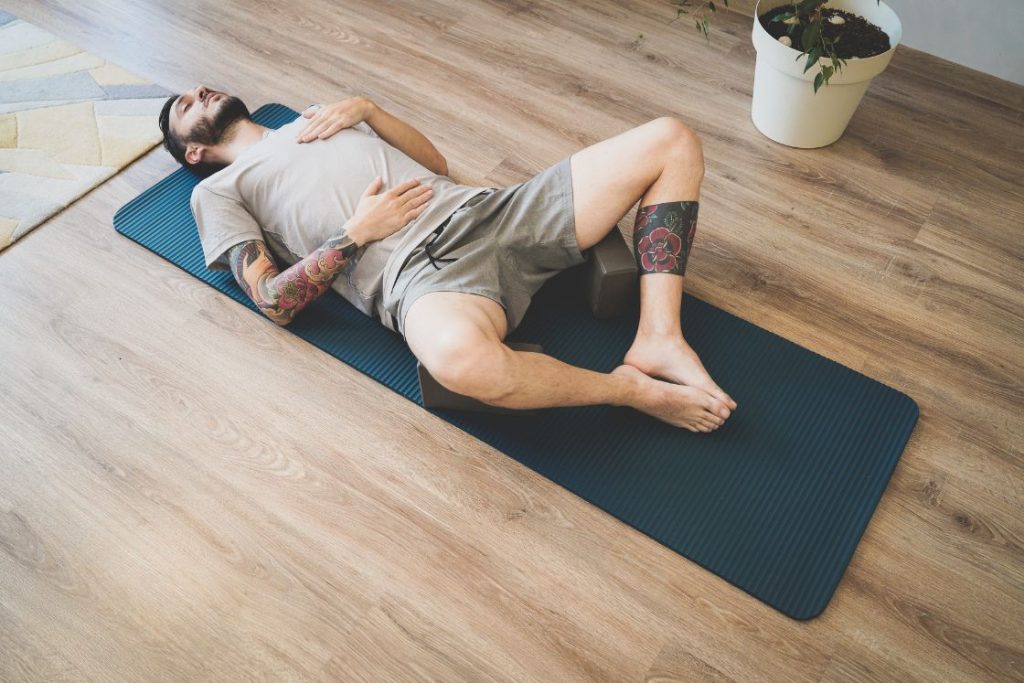
What is it?
This technique is about breathing deeply using the diaphragm, a large muscle located just below the lungs. Instead of filling only the upper chest with air, diaphragmatic breathing encourages taking in air right down into the abdomen.
How to do it?
- Sit or lie down comfortably.
- Place one hand on your chest and the other on your abdomen.
- Breathe in slowly through your nose, allowing your abdomen to rise as it fills with air. The chest should move minimally.
- Exhale gently, again through the nose, and feel your abdomen fall.
Why it’s important:
This deep breathing allows for more oxygen intake, aids in relaxation, and promotes better circulation. It contrasts with shallow chest breathing, which can be a result of stress and doesn’t utilize the lungs’ full capacity.
2. Nose Breathing
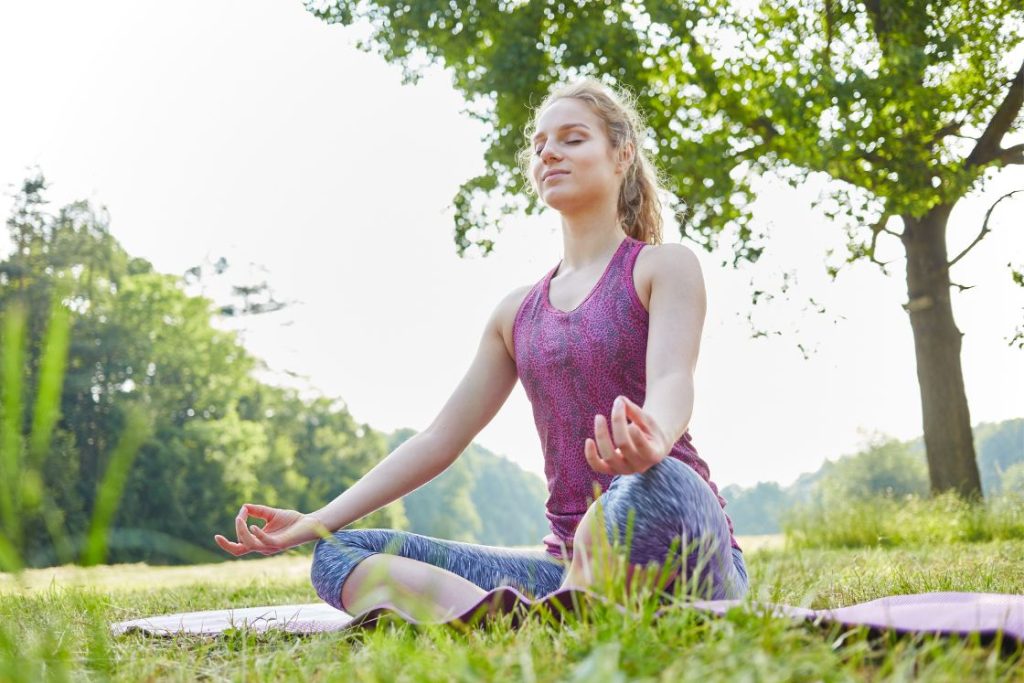
What is it?
This involves inhaling and exhaling solely through the nose, keeping the mouth closed.
Why nose and not mouth?
- The nose filters and warms the air, ensuring clean air reaches your lungs.
- Breathing through the nose releases nitric oxide, a molecule that helps in oxygen absorption.
- It controls the breath’s pace, leading to deeper and more regulated breathing.
Practice:
Next time you’re breathing or even during exercise, try focusing on solely inhaling and exhaling through the nose. Notice the calmness it brings.
3. Full Yogic Breath:
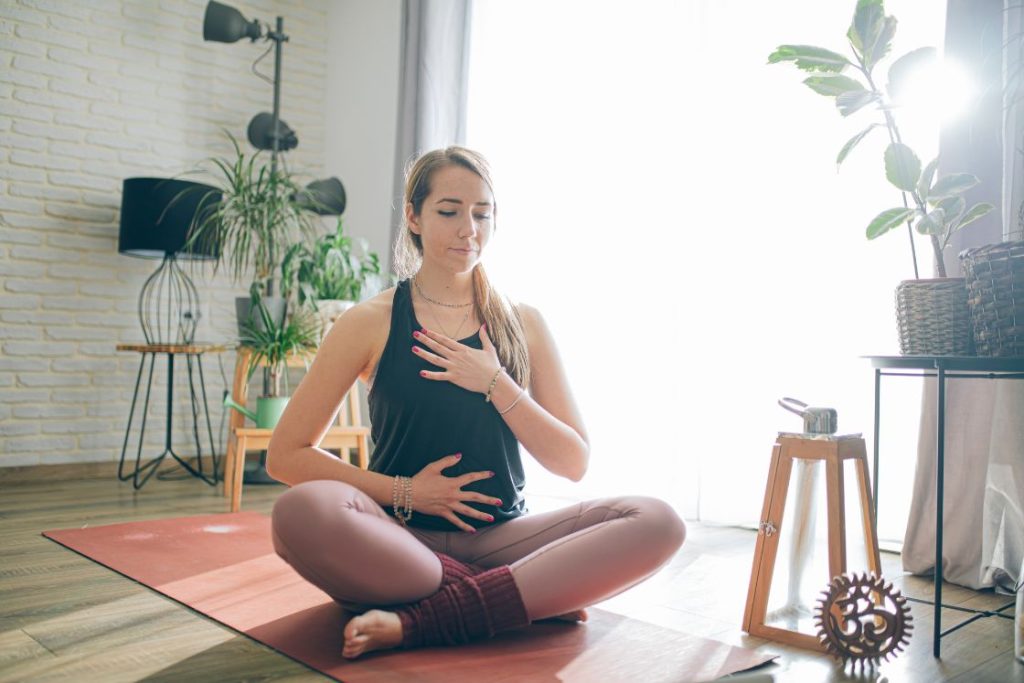
What is it?
This is a harmonious blend of abdominal, diaphragmatic, and chest breathing. It ensures that the lungs are used to their maximum capacity.
How to practice:
- Start with diaphragmatic breathing, filling the abdomen with air.
- Continue filling the air into the diaphragm, expanding it.
- Lastly, let the air rise into the chest, lifting it slightly.
- For exhaling, reverse the process. Empty the chest, contract the diaphragm, and finally, let the abdomen fall inwards.
Why it’s valuable:
This comprehensive breathing technique provides maximum oxygen supply, helps in energizing the body, and brings a sense of fullness and clarity to the mind.
Main Pranayama Techniques for Mindful Breathing
1. Anulom Vilom (Alternate Nostril Breathing)
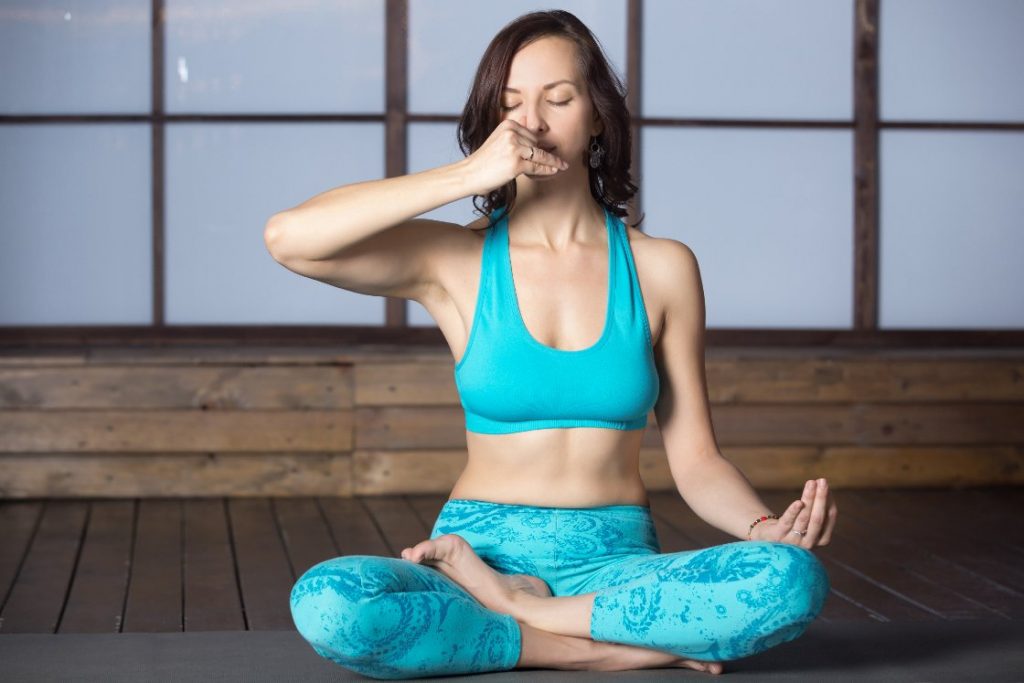
Steps:
- Sit in a comfortable position with your spine erect.
- Close your right nostril with your right thumb. Inhale slowly through the left nostril.
- Now, close the left nostril with your right ring finger and release the right nostril. Exhale through the right nostril.
- Inhale through the right nostril, then close it and exhale through the left. This completes one cycle.
Benefits:
- Balances the left and right hemispheres of the brain.
- Improves concentration and mental clarity.
- Reduces anxiety and stress.
Precautions:
- Avoid if you have a cold or nasal blockage.
- Always breathe comfortably without straining.
Anulom Vilom Pranayama and Its Benefits
2. Kapalbhati (Skull Shining Breath)
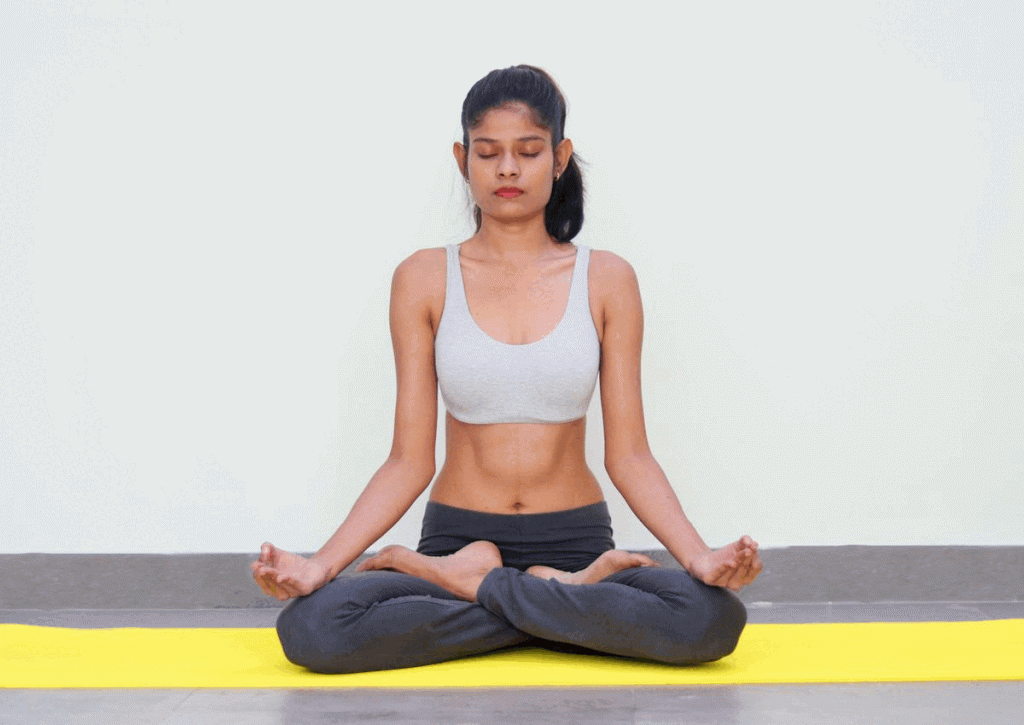
Steps:
- Sit comfortably with an erect spine.
- Take a deep breath in.
- Exhale forcefully through the nostrils, contracting the abdominal muscles. The inhalation should happen passively between the forceful exhalations.
Benefits:
- Cleanses the lungs and respiratory system.
- Increases oxygen supply to the cells, revitalizing the body.
- Boosts metabolism and aids digestion.
Precautions:
- Not recommended for people with high blood pressure, hernia, or gastric issues.
- Pregnant women should avoid this practice.
Read More: Learn Kapalbhati Pranayama and It’s Benefits
3. Bhastrika (Bellows Breath)

Steps:
- Sit upright and relaxed.
- Inhale deeply and forcefully through the nose, expanding the lungs fully.
- Exhale forcefully, ensuring complete contraction of the lungs.
- Continue this rhythmic inhalation and exhalation.
Benefits:
- Increases blood circulation.
- Clears obstructions in the respiratory system.
- Revitalizes the body and mind.
Precautions:
- If you feel dizzy, stop the practice and breathe normally.
- Not suitable for people with high blood pressure or heart conditions.
Learn More Bhastrika Pranayama and It’s Benefits
4. Ujjayi (Victorious Breath or Ocean Breath)
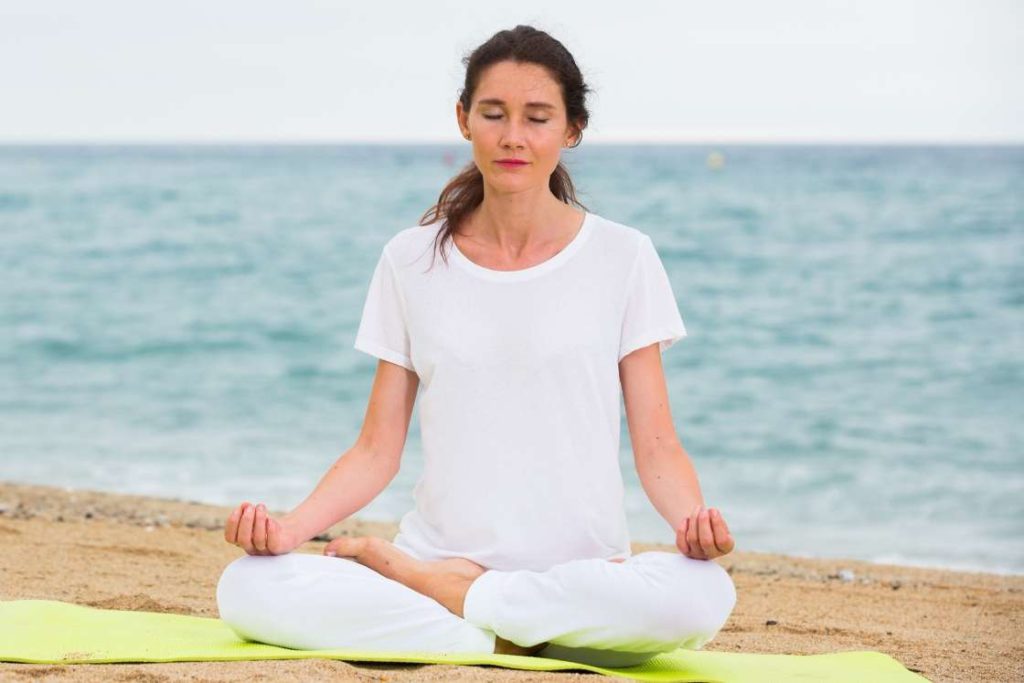
Steps:
- Sit comfortably.
- Inhale deeply through your nose.
- While exhaling, constrict the back of your throat, creating a soft hissing sound.
- The breath should be long and controlled, making the sound of distant ocean waves.
Benefits:
- Enhances concentration during yoga practice.
- Regulates blood pressure.
- Calms the mind and nervous system.
Precautions:
- Keep the breath smooth and do not strain the throat.
- If you feel light-headed, revert to normal breathing.
5. Other Pranayama Techniques
- Sitali: Cooling breath technique where you inhale through a curled tongue and exhale through the nose.
- Sitkari: Similar to Sitali, but you inhale through teeth with the tongue behind them.
- Bhramari: Humming bee breath, where you produce a humming sound during exhalation.
Read our more detailed articles on Sitali, Sitkari, and Bhramari.
Sync Your Breathing with Movement During Asanas for a Harmonious Flow of Energy
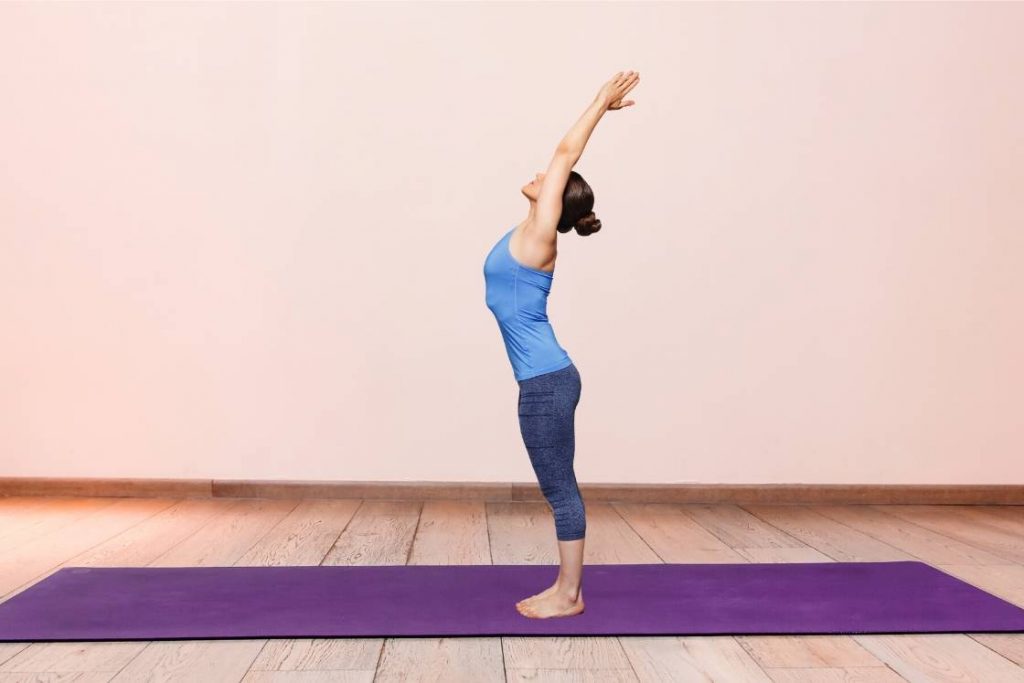
Breathing is more than just the act of taking in oxygen and releasing carbon dioxide. In yoga, it’s the bridge that links the body and the mind. When practicing asanas (yoga poses), understanding how to breathe can amplify the benefits of each pose and make your practice more profound.
In yoga, the breath acts as a rhythm, setting the tempo for your movements. Instead of letting the body lead, the breath guides the pace and depth of every move. This synchronization allows for a deeper awareness, alignment, and presence in each posture.
1. The importance of syncing your breath with movement
Breathing in sync with movement ensures you’re present in the moment. It allows for smoother transitions, increases oxygen supply to muscles, and heightens the meditative aspect of yoga.
2. When to Inhale and Exhale During Specific Poses
The general principle in yoga is that expansive movements or stretches are paired with inhalation, while contracting or folding movements are paired with exhalation. For example:
Inhale when:
- Raising the arms overhead (as in Mountain Pose).
- Opening the chest (like in Cobra Pose).
- Lengthening the spine (as in Upward-Facing Dog).
Exhale when:
- Folding forward (as in Forward Bend).
- Twisting the body (like in Seated Spinal Twist).
- Releasing and relaxing into a pose (as in Child’s Pose).
Though this is a general guideline, always ensure you’re breathing comfortably. The breath should guide you, not constrain you.
3. Breath Retention’s Role in Certain Asanas
In some asanas, practitioners are advised to briefly hold or retain their breath. This is known as “Kumbhaka” in Sanskrit.
What it does:
Breath retention can build internal energy or “Prana”. It also allows practitioners to stabilize a pose, increase concentration, and deepen the stretch or engagement of a posture. Examples:
- Holding the breath at the peak of a backbend to intensify the stretch.
- Retaining breath in poses that require balance, to focus and stabilize.
Precautions:
Always listen to your body. If holding your breath causes any discomfort, revert to normal breathing. It’s essential to practice under the guidance of a trained instructor when introducing breath retention into your routine.
Common Mistakes and Misconceptions Related to Breathing in Yoga
The path of yogic breathing offers profound benefits, but like any journey, it’s easy to take a wrong turn. Here, we highlight common mistakes and misconceptions to ensure you’re breathing correctly and reaping the maximum benefits.
1. Shallow Breathing vs. Deep Breathing
- Shallow Breathing: Involves short breaths that only fill the upper chest. It’s a common way many of us breathe, especially when stressed.
- Deep Breathing: Engages the diaphragm, filling the entire lungs. This type of breathing is more aligned with yogic practices.
Why It Matters:
Shallow breathing can limit oxygen intake and won’t stimulate the lower lungs, which are rich in calming receptors. Deep breathing, on the other hand, maximizes oxygen intake, calms the nervous system, and enhances overall well-being.
2. Forcing Breath or Holding It Unnecessarily
The Issue
Some individuals, in their eagerness to master a breathing technique, may force their breath or hold it for longer than is comfortable.
Implications
Forced or strained breathing can cause discomfort, dizziness, or even panic. Holding the breath without understanding the purpose or doing so uncomfortably can stress the body rather than relax it.
Best Practice
Breath should always be smooth and controlled. Remember, yoga and its associated practices prioritize harmony and balance. Always listen to your body and breathe in a way that feels natural and comfortable.
3. Overdoing Pranayama Without Proper Guidance
The Pitfall
Enthusiasm is excellent, but diving deep into pranayama practices without adequate knowledge or guidance can lead to imbalances or discomfort.
Consequences
Overzealous or incorrect practice can cause issues like hyperventilation, heightened anxiety, heightened digestive fire, overheating, or other physical discomforts.
Recommendation
Always learn pranayama techniques from a certified instructor or trusted source. And just as importantly, ensure you understand the purpose, benefits, and contraindications of each technique.
In Conclusion
Learning the art of yogic breathing is like opening a door to greater well-being, inner peace, and a deeper connection with yourself. As we journey through its various facets, from understanding its foundations to the nuances of safe practice, it’s evident that this ancient discipline is both profound and transformative.
Yet, like any journey, it’s one that is best traveled with mindfulness, guidance, and respect. Whether you’re a beginner or an experienced practitioner, may the insights in this blog serve as a gentle reminder of the power and beauty inherent in each breath. Here’s to breathing with intention, understanding and grace.
